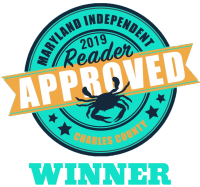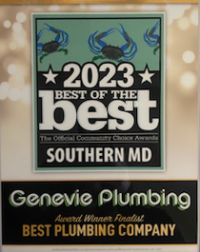Here at Genevie Plumbing, we know a thing or two about backflow events. Backflow is a plumbing danger that most of us simply don’t think about day to day but is a consideration that plumbers have all the time. But what is backflow, and what does it mean for your home or business? We tackle those questions and many more in our latest blog!
So…What Is Backflow?
Backflow, in simple terms, is an instance where the flow of water goes in the reverse of its intended direction. If you’ve ever seen a home or business being flooded and there was no natural flood, there’s a good chance that it may have been an instance of backflow. Backflow has two types: back pressure backflow and back-siphonage backflow.
Back Pressure Backflow
Back pressure backflow is when downstream pressure becomes greater than the main water source’s pressure. This can be the result of the potable water pressure weakening (firefighting, breakage in the main water line, etc.) or an increase in downstream pressure.
Back Siphonage Backflow
Back siphonage backflow, instead of being caused by pressure, is instead caused by a vacuum or partial vacuum. This is caused by negative pressure in the waterline, which then could result in non-potable water being drawn into the potable water supply. The type of backflow is also caused by construction, a break in the main water line, or firefighting.
Why Is Backflow Such A Big Deal?
As you can probably guess, backflow is not something that you want to happen to you. Backflow of either type we discussed can cause a heap of water damage that may take thousands of dollars and many hours of work to remedy. So if you aren’t a big fan of flooding, then you certainly want to avoid backflow.
The most dangerous issue associated with backflow is contamination from non-potable sources that can be a major health risk to those affected. As plumbing became a major fixture of cities historically, they often dealt with issues of backflow that would lead to outbreaks of disease. Advancements in sanitation, plumbing, and water treatment have reduced the chance of this substantially, but the danger still remains. Contaminated water can harbor many harmful germs and bacteria, so you never want it in your home or business.
Dealing With A Backflow Issue
If you are currently dealing with an issue of backflow, you should immediately contact a plumber certified in backflow services to assist you. The longer you wait, the more damage could be created, so you should call a certified plumber as soon as you are able.
While a plumber arrives, you should try to move any items you can to a safe location while avoiding any of the contaminated backflow water. This should be done carefully, so as to not contact the water or create an additional hazard in the process.
Preventing Backflow In Your Home or Business
The best way to deal with a backflow event is to prevent one from occurring, which is where backflow prevention comes in. There are two main ways that backflow is commonly prevented: air gaps and a backflow prevention and check valve.
Air gaps are a common pressure maintenance solution that is used for toilets, sinks, and other products. Remember, if pressure is not maintained, it can open the door for water to flow backward, so this is a simple but disaster-saving technology.
Backflow prevention and check valves are devices that effectively create a one-way street for water. They are simple devices in most cases and are designed so that they automatically close the valve in the event of a backflow event. When your backflow valve is installed and inspected regularly by a competent plumber, you should be able to have peace of mind as a property owner.
Trust Genevie Plumbing For Your Backflow Needs!
With nearly 30 years in the business of backflow, we are confident in our ability to provide what’s necessary for our customers in Maryland and Virginia. Whether you have an emergency backflow issue or simply require an inspection or light maintenance, our team is qualified and available to help.
For more information or to request our plumbing services, contact us today via phone or through our website!





